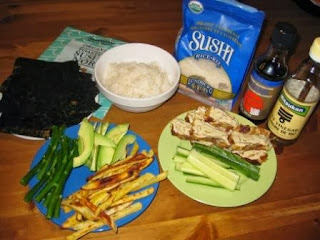Vancouver Aquarium states on their website that “90 percent of all large fishes have been caught. Due to unsustainable fishing practices, we’re now fishing the world’s last 10 percent of shark, swordfish and tuna.” They also mention a scientific study that estimates a world-wide fisheries collapse by 2048. That’s a pretty dire prediction for something that is only 34 years away and well within most of our lifetimes.
In
order to promote change in fishing practices, the Aquarium launched the
Ocean Wise conservation program in 2005 to “educate and empower
consumers about the issues surrounding sustainable seafood.” They have
created a comprehensive list of
seafood species
with their current status (Ocean Wise, Under Review, or Not
Recommended), Variety, Wild/Farmed, Harvest Method, and Region.
Interested in seeing if where your menu favourites fall on the list?

Different seafood species are allowed to carry the Ocean Wise label if the following parameters are met:
- Abundant and resilient to fishing pressures.
- Well managed with a comprehensive management plan based on current research.
- Harvested in a method that ensures limited bycatch on non-target and endangered species.
- Harvested in ways that limit damage to marine or aquatic habitats and negative interactions with other species.
Seeing this symbol at market and on their menus allows people to make
informed choices about the food they are eating and by word of mouth and
pushing from the consumer level, Ocean Wise has spread.
Since
its inception over 1000 restaurants, suppliers, and retail locations
across Canada and the United States have pledged to serve or carry Ocean
Wise seafood. In fact, in order to carry the Ocean Wise symbol on their
menus, restaurants are required to stop serving at least one
unsustainable item. Many of these restaurants have removed unsustainable
items from their menus entirely.
The biggest problems Ocean Wise attempts to address are:
Overfishing
– Some seafood populations have depleted to unacceptable levels based
on the current rates of consumption. Species at very high risk include
Chilean Sea Bass, Imported King Crab, Japanese Eel, Atlantic wild-caught
Flat Fish (including flounder and sole), and all species of Shark.
Bycatch
– 25% of what is caught by commercial fishing boats never makes it to
the dinner table. Most of these get tossed right back into the ocean and
die due to trauma from being caught. Certain types of fishing practices
yield even higher bycatch than others; these include surface longlining
and bottom trawling. The methods of fishing with the least likelihood
of bycatch use Seines, Longline, Pots/Traps, Pelagic Fish Trawl, or High
Sea Driftnet.
Habitat Damage – The loss of coral reefs, kelp forests, mangroves, and wet lands also have a huge impact on species reproduction and survival.
For information on how to support Ocean Wise at local businesses, check out their
website or their
free iPhone app.
They give up-to-date information on local businesses, markets, and
suppliers who sell Ocean Wise seafood, offer information on different
seafood species and the phone app has a fun little picture gallery as
well.























